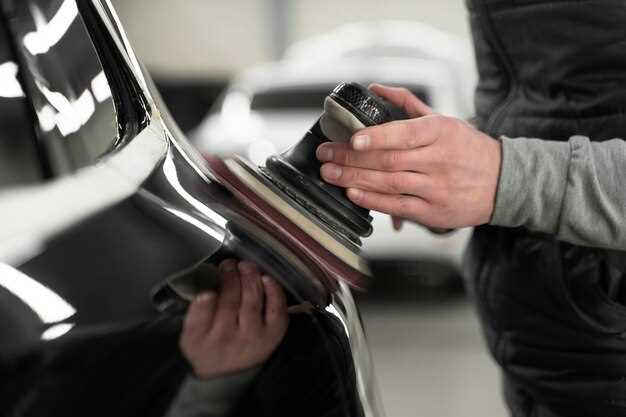
A track car is not just a vehicle; it is a passion, a symbol of your dedication to performance and speed. However, the thrill of racing can take a toll on its appearance. Maintaining a glossy finish is essential not only for aesthetic appeal but also for preserving the vehicle’s value. Racing exposes your car to various damaging elements, from dirt and debris to harsh weather conditions. Therefore, implementing a proper care routine is crucial for every enthusiast.
In this article, we will explore effective techniques and products designed to protect and enhance your track car’s paintwork. From choosing the right wax or sealant to establishing a regular washing schedule, each step plays a vital role in combating the wear and tear that racing incurs. Additionally, we will discuss common pitfalls to avoid, ensuring that your car continues to shine both on and off the track.
By following these guidelines, you can keep your track car looking as good as new, which allows you to focus on what truly matters–driving it to its limits. With the right approach, maintaining a glossy finish can be a straightforward and rewarding task for any car enthusiast.
Choosing the Right Wax and Sealant for Maximum Protection
Selecting the appropriate wax and sealant is crucial for maintaining your track car’s glossy finish. The right products not only enhance shine but also provide a protective barrier against environmental contaminants. There are two primary types of products to consider: natural waxes and synthetic sealants.
Natural waxes, typically made from carnauba, offer a warm, deep shine and are revered for their aesthetic qualities. They give a rich look that enhances color depth, making your vehicle appear more vibrant. However, natural waxes do have shorter longevity, often lasting only a few weeks to a couple of months, depending on conditions and usage.
Synthetic sealants, on the other hand, are engineered for durability and protection. They provide a long-lasting shield against UV rays, dirt, and moisture, generally offering protection for several months. Sealants can create a slick surface that repels water, which can be particularly beneficial during track activities where debris and water exposure are common.
When choosing between wax and sealant, consider the frequency of your track use, environmental exposure, and personal preference regarding shine versus longevity. If immediate gloss is your priority and you can maintain a regular application schedule, natural wax may be suitable. If you prefer a long-lasting, protective option with less frequent application, a synthetic sealant is likely the better choice.
Additionally, consider hybrid options that combine the benefits of both wax and sealant. These products can offer improved shine while maintaining extensive protection. Always ensure that the surfaces to be treated are clean and free of contaminants before applying any product to achieve optimal results.
Ultimately, the key to success lies in understanding the characteristics of each product and how they align with your needs as a track car enthusiast. Regular maintenance and proper product choice will keep your car looking its best while safeguarding its finish against the rigors of performance driving.
Daily Maintenance Routines to Prevent Damage During Practices

To preserve the glossy finish of your track car during practice sessions, implementing a daily maintenance routine is essential. This routine should focus on both preventive measures and immediate care after each practice.
Begin with a thorough inspection of the car before each practice. Check for any dirt, debris, or potential damage on the bodywork. Ensure that your tires are in optimal condition and free from any cuts or blisters that could affect performance and lead to further damage.
Before hitting the track, wash your car with a pH-balanced car shampoo. Avoid using harsh chemicals or abrasive materials, which can strip the protective wax or sealant from the paint. Use a soft microfiber cloth to gently dry the surface, preventing water spots from forming on the finish.
Apply a high-quality, durable wax or sealant at least once a week, especially if you are using the car frequently. This will create a protective barrier against scratches, UV rays, and other environmental factors that can dull the paint. Additionally, using a spray detailer after each practice can help remove any lingering dirt or grime effectively without compromising the finish.
After every practice session, take the time to assess the car for any new scratches or chips that may have occurred. If you spot any minor damage, use a touch-up paint to address chips immediately. This proactive approach will prevent rust and additional wear over time.
Pay attention to the interior and undercarriage as well. A clean interior not only enhances your driving experience but also prevents the accumulation of dirt that could eventually harm the exterior during transportation. Similarly, washing the undercarriage removes any accumulated grime that could lead to corrosion.
Lastly, consider using car covers for extra protection when your track car is not in use. Choosing a breathable fabric will help shield the vehicle from dust and contaminants while allowing moisture to escape, further preventing damage to the glossy finish.
Restoring and Polishing Techniques for Minor Scratches and Swirl Marks

Maintaining the glossy finish of your track car is essential for both aesthetics and resale value. Minor scratches and swirl marks may occur due to track use and environmental factors. Fortunately, several effective techniques can help restore the car’s paint without extensive professional intervention.
Step 1: Wash the Area
Before addressing scratches and swirl marks, thoroughly wash the affected area with a pH-balanced car soap. This step removes dirt and debris, preventing further scratching during the polishing process. Rinse and dry the surface completely to ensure optimal results.
Step 2: Assess the Damage
Identify the severity of the scratches. Light scratches may only affect the clear coat, while deeper ones can reach the paint layer. For minor scratches, the following polish techniques can be applied directly to the clear coat.
Step 3: Choose the Right Products
Select a high-quality polish designed for automotive paint. Look for products containing fine abrasives for minor scratches and swirl marks. Additionally, a microfiber applicator or pad is ideal to ensure even application and minimize the risk of new scratches.
Step 4: Polishing Technique
Apply a small amount of polish to the applicator pad. Work in small sections, using a circular motion with light pressure. This technique helps to evenly distribute the polish while gradually removing imperfections. Be sure to follow the manufacturer’s instructions regarding drying times and removal.
Step 5: Buffing
After polishing, use a clean microfiber towel to buff the area. This step enhances the shine and removes any excess product. A second round of buffing with a fresh towel can further improve the finish and clarity.
Step 6: Waxing
Once the surface has been polished and buffed, applying a high-quality wax or sealant is crucial. This step protects the newly restored finish from environmental factors and UV radiation while enhancing gloss. Consider using a product specifically designed for track cars, which often provides added durability.
Step 7: Regular Maintenance
To keep the glossy finish intact, establish a regular maintenance routine that includes washing and periodic polishing. This practice will help prevent the buildup of scratches and swirl marks and maintain your track car’s superb appearance.












